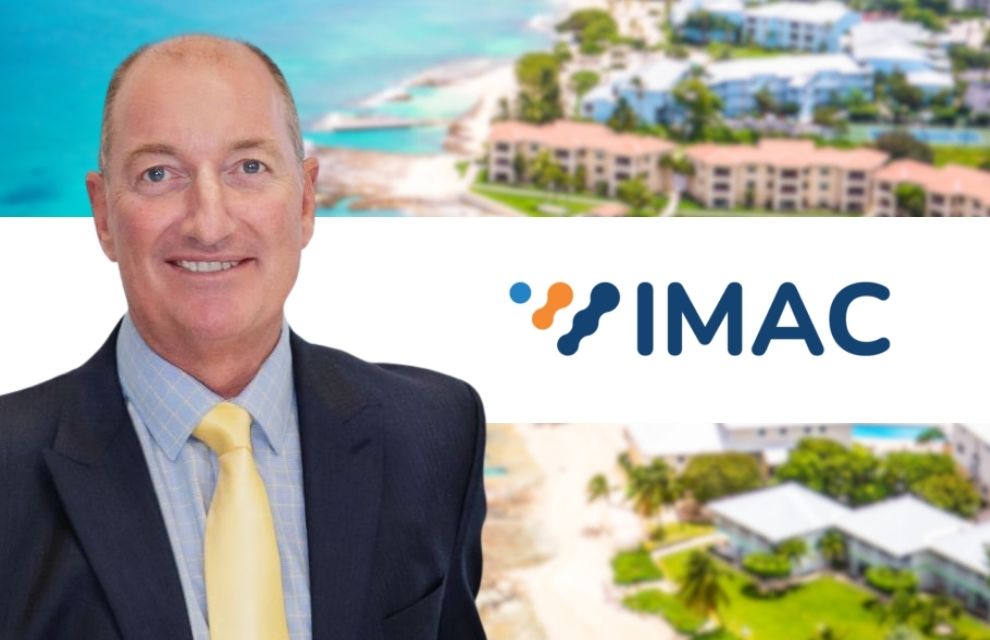IMAC
Cayman continues to draw new captive formations by leveraging its strong reputation in healthcare, group captives, and catastrophe bonds, says IMAC’s Kevin Poole, speaking with Diana Bui about the jurisdiction’s latest regulatory developments
What are the most significant regulatory changes in the past year, and how do they align with global standards?
Over the past year, the Cayman Islands has introduced a series of regulatory enhancements that have significantly strengthened its insurance framework and aligned it more closely with international standards.
In October 2024, the Cayman Islands Monetary Authority (CIMA) updated its policy on the recognition and approval of actuaries. This revised policy ensures that regulated insurers maintain effective actuarial functions, consistent with global best practices.
Further changes came in April 2024, when CIMA issued new rules and guidance on the maturity, accessibility, and retention of records. These measures set out clear expectations regarding the handling of records, including compliance with the Data Protection Act. They also introduce minimum mandatory retention periods and requirements for the proper maintenance of accounting records.
Reinsurance arrangements were also brought under closer regulatory scrutiny. In May 2024, CIMA introduced updated guidance to ensure such arrangements are properly documented and meet regulatory standards. The new rules provide greater clarity on what constitutes compliance, supporting improved transparency and oversight in this area.
In January 2025, modest increases to both registry and CIMA fees were implemented. These represent the first fee adjustments in a decade and reflect the jurisdiction’s continued evolution while maintaining its competitiveness.
Several key developments were introduced towards the end of 2023. In October, CIMA released new rules and guidance on corporate governance for regulated entities. These outline minimum expectations for sound and prudent management, creating binding obligations with potential consequences for non-compliance, including fines or other regulatory action.
At the same time, CIMA introduced a complementary set of rules and guidance on internal controls. These define its expectations for robust control frameworks across regulated entities, again carrying enforceable obligations.
Collectively, these regulatory updates reflect the Cayman Islands’ commitment to aligning with the Insurance Core Principles (ICPs) set out by the International Association of Insurance Supervisors (IAIS). They reinforce CIMA’s focus on integrity, transparency, and maintaining the jurisdiction’s standing as a globally competitive insurance domicile.
How has the evolving framework impacted the growth and competitiveness of Cayman’s captive insurance sector?
The evolving insurance regulatory frameworks in the Cayman Islands have significantly influenced the growth and competitiveness of the captive insurance sector in several key ways. The jurisdiction’s insurance sector has experienced sustained growth, with 42 new international insurers licensed in 2024 — the highest number in over a decade. This milestone reflects the effectiveness of Cayman’s robust regulatory environment in attracting new market participants.
Cayman’s commitment to global standards is also evident in its focus on enhanced compliance and risk management. CIMA has introduced strengthened measures, particularly around anti-money laundering and countering the financing of terrorism (AML/CFT). These developments have reinforced the sector’s reputation for regulatory rigour and sound risk governance.
In addition, CIMA’s ongoing efforts to achieve regulatory equivalence with the US National Association of Insurance Commissioners (NAIC) have boosted global competitiveness, further cementing Cayman’s position as a leading domicile for captives and reinsurance.
Given the growing focus on innovation in the industry, are there any new regulatory provisions addressing the use of insurtech, blockchain, or AI in captive operations?
CIMA has actively supported insurtech innovation, with the Class B(iii) insurance licence providing a streamlined pathway for insurtech reinsurers to establish operations in Cayman.
This licence encourages the adoption of technology to enhance risk identification, decision-making, and operational efficiency.
The Cayman Islands has also developed a robust regulatory framework for virtual asset service providers (VASPs), ensuring alignment with international standards. This framework addresses AML/CFT concerns, while promoting the secure and transparent use of blockchain technology within insurance operations.
Although specific regulations concerning the use of AI in insurance are still evolving, the jurisdiction has taken a proactive approach in fostering an environment conducive to technological advancement. Regulatory efforts focus on upholding data protection, privacy, and ethical standards in AI applications, ensuring responsible and effective use of data.
How is Cayman adapting its regulations to address emerging risks like cyber threats and climate change?
The Cayman Islands has adopted a proactive stance in updating its insurance regulations to address emerging risks, particularly those related to cyber threats and climate change.
In particular, CIMA has issued comprehensive cybersecurity guidelines for regulated entities, underscoring the importance of robust measures to guard against financial losses, operational disruption, and reputational harm.
The rules on risk management require insurers to implement frameworks for identifying, protecting against, detecting, responding to, and recovering from cyber threats — ensuring they are well-positioned to manage cyber incidents effectively.
In addition, CIMA recognises the importance of integrating environmental, social, and governance (ESG) considerations into the insurance sector. It encourages insurers to incorporate climate-related risks into their risk management and corporate governance frameworks. This includes monitoring environmental risks within investment portfolios and promoting transparency and disclosure.
What is CIMA’s vision for the future of captive insurance, and how does it plan to maintain Cayman’s leading position?
According to CIMA, its vision for the future of captive insurance is grounded in innovation, resilience, and global competitiveness. As the Cayman Islands faces challenges such as rapid technological change, evolving global regulations, cybersecurity threats, consumer protection concerns, and a growing emphasis on sustainability, CIMA is continuing to take proactive measures to preserve its leadership in regulatory excellence.
This includes fostering the adoption of innovation and technology — particularly insurtech, blockchain, and AI — to improve efficiency and risk management. CIMA remains committed to regulatory excellence by maintaining a robust and adaptive regulatory framework, with continuous updates to address emerging risks such as cyber threats and climate change.
Sustainable growth is also a key focus, with efforts to advance the integration of ESG principles into business practices and risk management strategies.
In addition, CIMA is continuing to strengthen its alignment with global standards, including those set by the IAIS and the Financial Action Task Force (FATF), to ensure trust, compliance, and international credibility.
To support market expansion, CIMA continues to attract new captive formations and reinsurance companies by capitalising on the jurisdiction’s strong reputation in healthcare captives, group captives, and catastrophe bonds, as well as its growing presence in life and annuity and property and casualty reinsurance.
At the same time, it is continually enhancing compliance and risk management by reinforcing AML/CFT measures to uphold regulatory integrity and draw high-quality business.
CIMA is also investing in educational initiatives and industry collaboration to ensure that professionals remain well-informed on regulatory changes and best practices. By focusing on these strategic areas, CIMA aims to secure the Cayman Islands’ position as a leading and forward-looking jurisdiction for captive insurance, fully equipped to adapt to global trends and emerging risks.
With other jurisdictions enhancing their regimes, how is Cayman staying ahead in attracting new captives?
Cayman is staying ahead in attracting new captives through several strategic initiatives and advantages. CIMA regularly updates its regulatory framework to remain aligned with international standards, such as those set by the IAIS and FATF. This ensures a robust and compliant environment for captives and reinsurers, which in turn attracts sophisticated licensees.
Furthermore, the Cayman Islands is currently reviewing its licensing classifications, with plans to introduce new categories in 2025. These will include licences for managing general agents (MGAs), reinsurance brokers, and a new B(iv) licence aimed at bridging the gap between the existing B(iii) licence and the Class D open market reinsurers.
How is IMAC collaborating with CIMA to address current challenges and concerns in the captive sector?
The Insurance Managers Association of Cayman (IMAC) and CIMA share a long-standing partnership dedicated to addressing challenges and advancing the captive insurance sector. IMAC holds quarterly meetings with CIMA to discuss regulatory developments, industry concerns, and new initiatives, ensuring that updates are clearly communicated to its membership.
IMAC also actively engages in CIMA’s industry consultation process, offering feedback on proposed regulatory changes and submitting industry position papers to address key issues.
Together, IMAC and CIMA support educational initiatives aimed at keeping industry professionals informed about regulatory developments and best practices. These include IMAC-led seminars, educational sessions at IMAC’s Cayman Captive Forum, and CIMA’s direct engagement with insurance managers to promote transparency around regulatory policies.
On the international stage, IMAC and CIMA collaborate to position the Cayman Islands as a premier jurisdiction for captive insurance. In 2025, both organisations participated in major industry events such as the World Captive Forum, ReFocus, and the Captive Insurance Companies Association (CICA) conferences, with CIMA contributing to regulatory panels addressing key industry challenges.
Through this collaboration, IMAC and CIMA ensure that the Cayman Islands remains a competitive, innovative, and resilient jurisdiction for captive insurance.
What are the key trends or opportunities you see shaping the future of the captive insurance industry in Cayman in the upcoming years?
The Cayman Islands’ captive insurance industry is poised for significant growth over the next decade, driven by several key trends and opportunities.
Technological advancements are playing a transformative role, with the integration of insurtech, blockchain, and AI enhancing data analysis, decision-making, and operational efficiency. Innovations in areas such as telehealth, robotics, and medical records are also opening up new avenues, with some technology firms even establishing their own captives.
There is also a notable expansion in the use of captives, which are increasingly being deployed to manage a broadening range of risks — including cybersecurity, climate-related exposures, employee benefits, supply chain vulnerabilities, and gaps in commercial coverage through DIC/DIL policies.
Additionally, Cayman offers a diverse range of captive structures, including single-parent captives, group captives, cells, incorporated cells, and fully collateralised reinsurance opportunities. This structural flexibility continues to attract both clients and capital.
With its well-established reputation as a leading (re)insurance domicile, Cayman is well-positioned to attract new captive formations and reinsurance companies, further driving market expansion.
Are there any upcoming initiatives or reforms in the pipeline that could further strengthen Cayman’s position as a global captive domicile?
Cayman is making significant strides to reinforce its position as a leading global captive domicile. The introduction of new licence classes will broaden Cayman’s product offerings, enabling the jurisdiction to better cater to a wider array of (re)insurance and reinsurance needs. In parallel, ongoing efforts to secure NAIC equivalency are expected to further enhance Cayman’s standing as a globally recognised jurisdiction.
The Cayman Captive Forum, set to take place on 2-4 December at the Ritz-Carlton, Grand Cayman, will continue to play a key role in showcasing the industry. This flagship event will focus on regulatory developments, emerging technologies such as insurtech, blockchain, and AI, as well as market trends shaping the captive insurance landscape. The 2024 Forum attracted a record 1,570 registrations, underscoring the international interest in Cayman’s captive insurance proposition.
In a similar vein, the Cayman International Reinsurance Companies Association (CIRCA) spotlighted the jurisdiction’s reinsurance strengths during its second ReConnect Conference, held on 10-11 April 2024, which welcomed over 600 attendees.
Together, these initiatives and events reflect Cayman’s continued commitment to innovation and leadership in the captive insurance and reinsurance space, ensuring sustained growth and resilience amid an evolving global environment.





